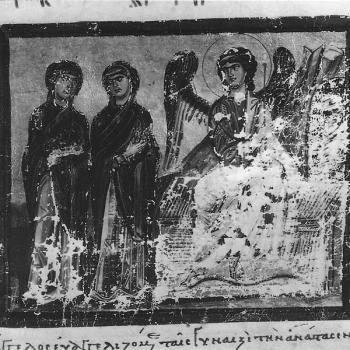Most growing up in church are familiar with the Biblical Old Testament story of Noah and the flood. It is what’s classified as a “flood myth.” As the Bible tells us, humanity’s wickedness led to a great flood, one which wiped off just about everyone on the planet. The exception was the righteous Noah and his immediate family (sons, daughters-in-law, and wife). Given over one hundred years for humanity to turn around, Noah’s obedience to God rendered him righteous, and the Bible tells us Noah walked with God (Genesis 6:9).
Some accept the story of Noah and the flood as literal fact. Others question the story, feeling there are inaccuracies in the details, causing them to believe it is more a metaphor than a literal experience. Would you be surprised to learn that the idea of an ancient flood isn’t an exclusive idea?
Believe it or not, ancient flood myths are found throughout the ancient world. Why do they matter? What do they teach us?

What are flood myths?
Flood myths are, in the simplest of terms, ancient stories that revolve around an individual’s experience with a cataclysmic flood. They are called “myths” not in the sense of being false or fictional, but because these stories don’t just relate to a bad weather forecast. Flood myths see the experience of a natural disaster through spiritual eyes. Individuals who experienced such things didn’t just experience them in the natural. Moved by spiritual beliefs, the ancients sought spiritual insights from either God or the gods to discern the reason for the flood. These insights, coupled with the stories surrounding them, became what we now call “flood myths.”
The purpose for these ancient stories isn’t to provide a biographical retelling of someone’s detailed experiences. Flood myths aren’t diaries. They exist to provide moral insights into human nature, reflections on the way the natural and the spiritual overlap, and create theological stories for ancient cultures. If we study them in context, they offer great perspectives on the beliefs and experiences of the ancient world.
What flood myths exist?
The best-known flood myth is the story of Noah, found in Genesis 6-9. However, Noah’s account isn’t the only one, nor is it the oldest.
- The oldest legend that mentions a flood is The Epic of Gilgamesh. While The Epic of Gilgamesh doesn’t speak of a flood experience, it’s a narrative poem that mentions Utnapishtim. Utnapishtim and his wife were the only humans to survive a great flood. From them, Gilgamesh learns the meaning of life.
- The Sumerians had the Eridu Genesis account, which follows the form of our Genesis account more closely: humanity was wicked and in an act of moral judgment, the gods execute a great flood. One surviving individual, Ziusudra, is commanded to create a boat to save himself and one of every living creature.
- Hindu accounts of a great flood are found in the Satapatha Brahmana and Puranas. Known as manvantara-sandhya, an Avatar of Vishnu warns Manu, the first man, of a coming flood. He is advised to build a giant boat in order to survive.
- Plato’s Timaeus mentions Zeus punishes erring humanity with a great flood. Prometheus, who created humanity from clay, tells his son, Deucalion to build an ark so he can be saved.
- Several American Indigenous groups (Hopi, Cheyenne, Blackfeet) espouse flood myths that changed their landscapes and histories. In one such story, a traditional deity flooded the land up to the mountains. Tribal members were given water of many colors to drink, and told to speak. Those who received different colored water spoke different languages. Those who received black water spoke the same language.
Was there really a flood?
There’s some question as to the veracity of flood myths. Some believe the entire world was flooded. Others argue flood myths reflect the idea that there was a regional flood, one that impacted “the world” in a limited sense (that an ancient group experienced firsthand). Science supports the idea that there was actually a flood involving the Mediterranean Sea and the Black Sea about 7,500 years ago. It was widespread enough to cause the inhabitants therein to think the world was ending. Among future generations, it became a starting point for new beginnings…both naturally and spiritually.
The nature of flood myths provides an ancient cultural proof that something did happen. While the accounts vary in some of the mythological interpretations, there’s enough of them to say that yes, a flood definitely happened. A cataclysmic natural event invaded their worlds, changed things around, and caused them to seek answers from a higher source.
What caused the flood? (No, really)
Flood myths would tell us either God or the gods caused the flood. Humanity reached such a terrible point, there was no choice but to start again.
In the natural realm, the great flood was probably the result of ancient climate change. Melting glaciers and rising temperatures caused a change in coastlines and river basins. Long story short, the shift in land and rising sea levels caused a huge flood.
The natural explanations of this great flood don’t take away from its moral revelations. It’s perfectly reasonable to believe both accounts without contradiction.
The idea of cosmic salvation
As Christians, we often see Christianity through a limited lens. We believe salvation is a human experience, not a cosmic one. If we study the history of Christianity, however, such a view is both western and modern. As I discussed in an earlier column (one that explored the idea of seeing pets in the afterlife), redemption isn’t just a human experience. Scripture tells us that one day, the universe will also find liberation from the results of sin. Humanity’s sinful impact rides not just through our experience, but nature’s, as well. When humans sin, the world suffers under the weight of it, along with us.
The idea of a great flood is a story of cosmic salvation. Tempted as we may be to only look at the humanity of the story (heavy on judgment), there’s also a component of cosmic grace present in its words. Humanity was so wicked, the earth needed to start again as much as the human race. Through the ancient flood, we find a type of baptism.
…In it only a few people, eight in all, were saved through water, and this water symbolizes baptism that now saves you also—not the removal of dirt from the body but the pledge of a clear conscience toward God. It saves you by the resurrection of Jesus Christ, Who has gone into heaven and is at God’s right hand—with angels, authorities and powers in submission to Him. (1 Peter 3:20-22, NIV)
A lesson in numbers
In the ancient world, letters and numbers overlapped. Both letters and numbers often had meaning, sometimes in a way that doesn’t translate today. In the Genesis flood account, we find many numbers, all of which have meaning:
6th Chapter
- 120: The maximum number of years humans would live on earth (Genesis 6:3). 120 equals three (1+2+0). Three signifies manifestation and union with the Godhead.
- 300/50/30: The dimensions of length, height, and depth on the ark in cubits (Genesis 6:15). Notice we see the number three twice. We also see the number five, which signifies grace.
- 8: The number of people saved on the ark (Genesis 6:18). One number higher than completion represents new beginnings.
- 2: The number of each kind of animal Noah is originally instructed to bring on the ark (Genesis 6:19-20). Two represents duality, of the separation of one from unity.
7th Chapter
- 7: The number of pairs of clean animals Noah was instructed to bring on the ark (Genesis 7:2-3). Noah is also warned by God seven days in advance about the impending flood (Genesis 7:4). The number seven is classified as the “God number,” because it is one number higher than the number for man. It represents completion (such as a cycle or a situation).
- 40/40: The flood took place over 40 days and 40 nights (Genesis 7:4). Four is the number of materialization, when that which is manifest can be seen. The two figures of 40+40=80, which also signifies at the end, a new cycle or new beginning.
- 15: The flood waters reached over 15 cubits (Genesis 7:20). Fifteen signifies the number of man, the number 6 (1+5=6). As the flood was to destroy humanity, the number six points to this reality.
- 150: The flood waters took 150 days to recede (Genesis 7:24). As with the number 15, this parallels the number of man (six), destroying humanity.
8th Chapter
- 17/7: The ark came to rest on Mt. Ararat on the 17th day of the seventh month (Genesis 8:4). The number 17 signifies the number 8 (1+7=8), signifying a new beginning. The seventh month indicates completion.
- 7/7: Noah waited seven days before sending the dove out again (Genesis 8:10). He waited another seven days before establishing the existence of dry land (Genesis 8:12). The addition of 7+7=14, and 1+4=5. We see the presence of both completion and grace in this process.
- 1/1: Noah left the ark on the first day of the first month (Genesis 8:13). One represents finding or following the right way, through the one God. The two together, representing duality, display his movement from the one to moving back into life with others.
- 601: Noah was 601 when he left the ark (Genesis 8:13). Adding up 6+0+1=7, such indicates the completion of the cycle on the ark.
- 27/2: The earth was dry by the 27th day of the second month (Genesis 8:14). The addition of 2+7=9, which represents a high evolution or realization. The number 2, representing duality, represents the separation of land and water.
Thoughts on the flood
The flood story exists to prove God’s sovereignty and show a powerful message of salvation to readers. Rather than reading it as a diary, we should read it for its moral contents and find ourselves inspired to be like Noah. In our day, we too are called to be different. Our radical obedience to God might set us apart, but it also gives others a true witness, regardless of what’s going on in our world today. Learning from the numerical symbolism, the integrity of Noah, and the character of our God inspires us to live for God, even in a world that might seem flooded by the consequences of sin.














